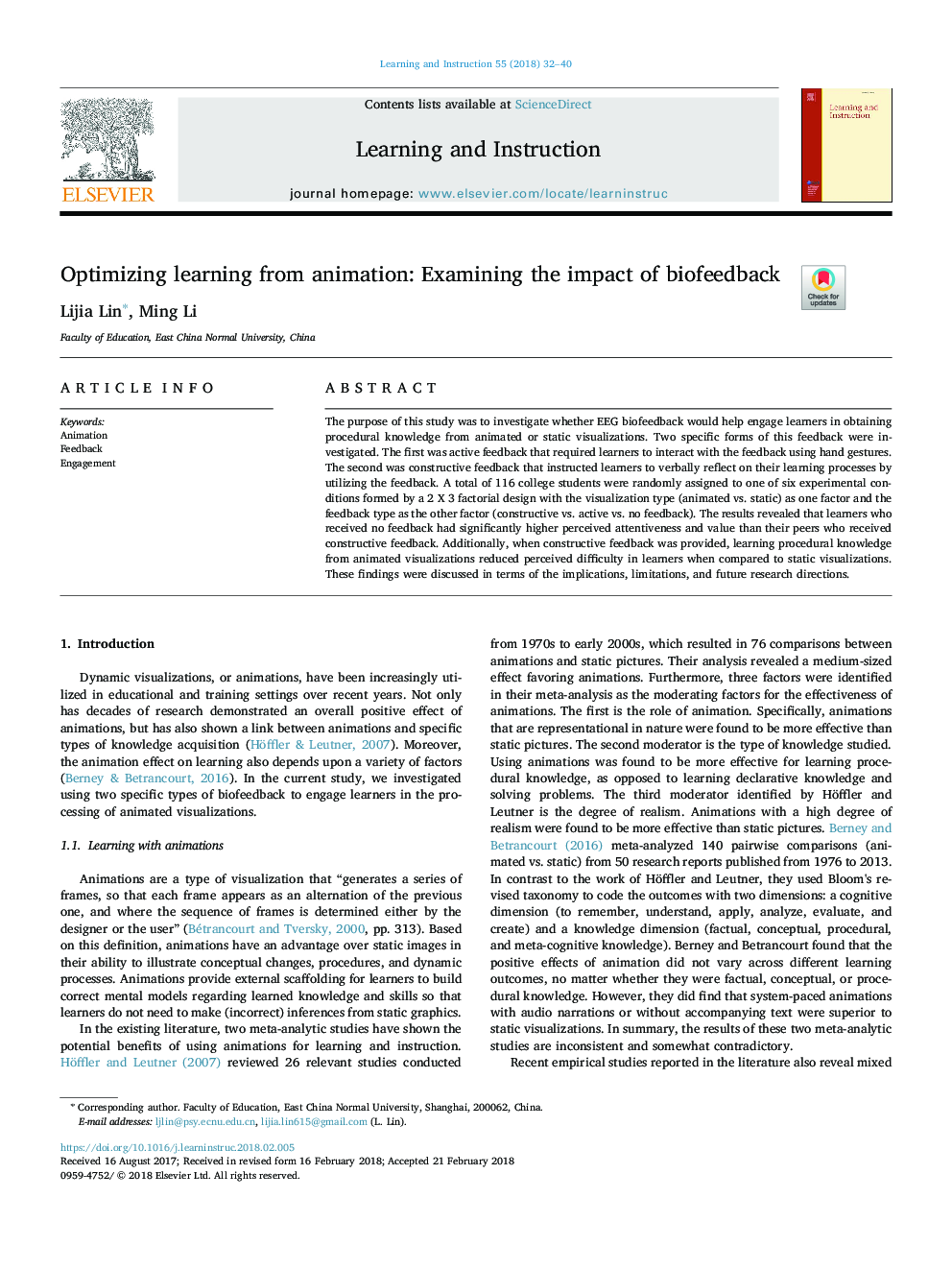| Article ID | Journal | Published Year | Pages | File Type |
|---|---|---|---|---|
| 6845581 | Learning and Instruction | 2018 | 9 Pages |
Abstract
The purpose of this study was to investigate whether EEG biofeedback would help engage learners in obtaining procedural knowledge from animated or static visualizations. Two specific forms of this feedback were investigated. The first was active feedback that required learners to interact with the feedback using hand gestures. The second was constructive feedback that instructed learners to verbally reflect on their learning processes by utilizing the feedback. A total of 116 college students were randomly assigned to one of six experimental conditions formed by a 2 X 3 factorial design with the visualization type (animated vs. static) as one factor and the feedback type as the other factor (constructive vs. active vs. no feedback). The results revealed that learners who received no feedback had significantly higher perceived attentiveness and value than their peers who received constructive feedback. Additionally, when constructive feedback was provided, learning procedural knowledge from animated visualizations reduced perceived difficulty in learners when compared to static visualizations. These findings were discussed in terms of the implications, limitations, and future research directions.
Keywords
Related Topics
Social Sciences and Humanities
Psychology
Developmental and Educational Psychology
Authors
Lijia Lin, Ming Li,
